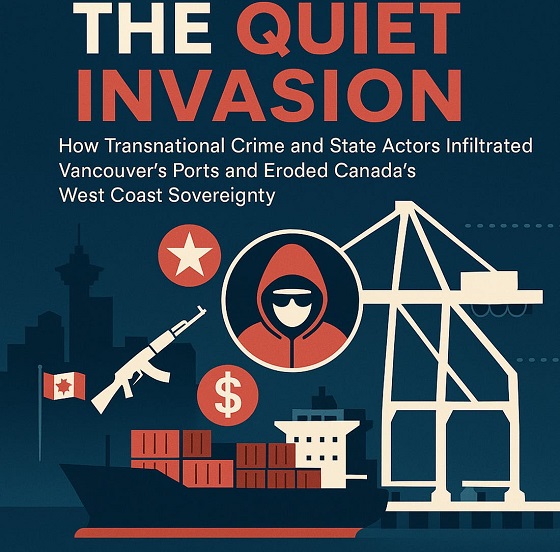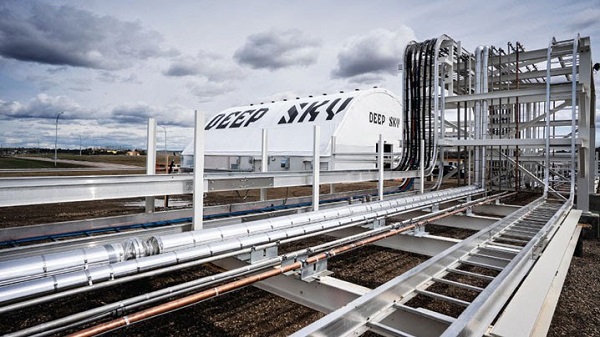Uncategorized
Similar to German crisis! Asylum seekers spreading from largest cities into the rest of Canada
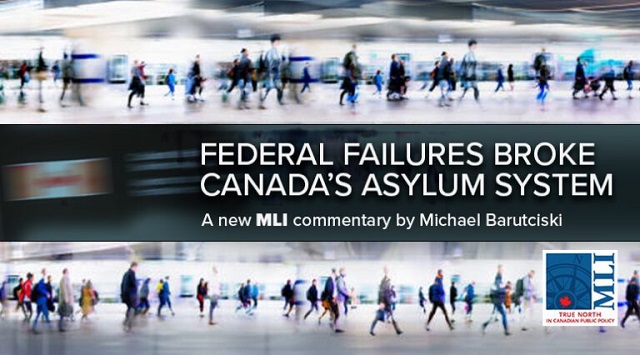
Federal failures broke Canada’s asylum system
From the MacDonald Laurier Institute
By Michael Barutciski
Our quiet asylum crisis is largely a self-inflicted wound.
Introducing the problem
Recently released statistics indicate over 144,000 migrants claimed asylum in Canada during 2023. This is the highest year on record and is several times higher than any year before the Liberals formed government in 2015. Until a decade ago, Canada was receiving on average less than 25,000 asylum claims per year.
In the days following the publication of the latest numbers Canada’s English-speaking media barely covered this story, despite extensive reporting from Quebec media. Perhaps this is not surprising given that almost half the asylum claims were made in Quebec, prompting premier François Legault to send a formal letter to prime minister Justin Trudeau requesting financial help and measures to stem the flow. However, a comparable number of claims were made in Ontario, which explains why Toronto’s municipal authorities have also been asking for federal money to help with the overwhelmed local services.
Why have there been so many asylum claims in 2023 despite the closing of Roxham Road almost a year ago? After several years of use by asylum seekers, the infamous rural crossing between Quebec and upstate New York was closed. Activists and academics warned that illegal entries along the U.S. land border would increase but this did not happen. Entering illegally was simply not necessary because Ottawa also loosened legal requirements for entry to Canada; the easiest way to eliminate so-called “irregular” migration is to “regularize” it.
The explosion in asylum claims post-Roxham is the result of two simultaneous policy decisions: (1) loosening the criteria for visa issuance and (2) allowing visa-free travel for potential asylum seekers. In other words, our quiet asylum crisis is largely a self-inflicted problem.
The only logical explanation for these striking policy decisions is wide-spread ideological conviction that Canada must be as open as possible. But this conviction is now posing a long-term threat to the asylum system. The country has suffered from a lack of debate and viewpoint diversity that allowed this simplistic ethic to flourish unopposed throughout our political and media establishment.
The good news is that Canadians are finally having a genuine debate about immigration policy. It is encouraging that this debate is also happening within an atmosphere that remains decidedly pro-immigration. No serious analyst is blaming the actual migrants; the blame is instead directed at administrative policies that have allowed the proliferation of incoherence and even abuse in our system.
However, within this new debate on immigration policy, we need to keep in mind that asylum is a distinct issue that carries its own important legal and moral obligations. Our liberal democratic principles are subverted if we do not treat those who seek asylum humanely and with dignity.
We also need to make sure that the principles undergirding our asylum system are coherent. The justification for who we decide to grant asylum to, as well as who is denied protection and removed from Canada should be plain to the public. Distortion or abuse of these principles can undermine public confidence and support for the generosity that has long characterized Canada’s international image.
The federal government’s laxness in sticking to and articulating a principled policy created the current problem. Canada is once again faced with an asylum predicament, while the country’s fiscal position limits the policy options. Any Canadian concerned with the well-being of individuals seeking asylum should be concerned that Canada may be forced to turn away from our historically humanitarian approach as a corrective to a crisis created by near-sighted and careless policy.
Contextualizing the asylum numbers globally and domestically
Examining comparable western liberal democracies reveals an important context.
The broken asylum system in the U.S. is yet again playing a role in the upcoming presidential election as Americans watch uninvited migrants flow through their southern border with Mexico to claim asylum. In the meantime, president Biden has resumed construction of the border wall he stopped early in his mandate.
As the European country with the most asylum seekers, Germany has received a similar number of asylum seekers per capita compared to Canada. A key distinction is that Germany’s progressive leaders have been acknowledging there is a crisis. The United Kingdom is still trying to enact draconian legislation to stop asylum seekers from crossing the Channel and to establish an offshore processing scheme in faraway countries such as Rwanda. Likewise, Italy has announced it will intercept ‘boat people’ crossing the Mediterranean and transfer them to Albania for processing. Austria and Denmark are exploring a similar approach. More extreme Dutch politicians recently won an election in the Netherlands on migration-related problems and they are now trying to form a government.
Across the world political leaders, ranging from U.S. Democrats to Germany’s coalition Social Democrat and Green partners, are realizing that current approaches to asylum are undermining their democracies and stoking reactionist anti-immigrant rhetoric. By constantly emphasizing their openness to migration and refusing to acknowledge problems, the Trudeau’s Liberals appear as a global outlier even among progressive (typically pro-immigration) governments.
The Canadian problem is not as dramatic as the situation on some parts of the Mexico-U.S. border or the Mediterranean sea routes in Europe. The issue in Canada, however, is still breaking a system which has traditionally relied on strong public confidence in our borders and controlled migration flows.
To understand the latest Canadian asylum statistics, we also need to distinguish asylum numbers from the numbers concerning another category: the refugee resettlement program that selects and resettles vulnerable people from overseas. As Prime Minister Trudeau has said, Canada should be proud that it is a world leader for this distinct category which is part of the annual intake of permanent residents.
The refugee resettlement program is an example of controlled migration. The incoming numbers can be adjusted at any moment because government authorization for entry under this category is ultimately a discretionary act. It also does not raise policy challenges comparable to sudden flows of uninvited asylum seekers. The government can only try to dissuade uncontrolled migration through measures such as strict visa controls and interstate cooperation, along with airline sanctions for undocumented travelers. Canada was known for decades as a model country regarding this type of migration control.
To suggest that Canada’s recent spike in asylum claims is related to a global displacement crisis, as repeated by the federal government and others trying to downplay the situation, is to ignore the distinct demographics of the Canadian inflow. The global statistics mostly reflect displaced people who remain within their countries of origin, along with those fleeing specific conflict situations (e.g. Syria, Afghanistan, Ukraine); by and large these are not the migrants claiming asylum in Canada.
Mexico remains the top source country for asylum claims in Canada, yet the federal government continues to allow Mexicans to enter the country without visas. Second place is currently held by citizens of India, which is also a top source country for accepted temporary residents. The unusual situation has been highlighted by Quebec media that reported on the high number of international students claiming asylum.
According to Radio-Canada, immigration authorities also quietly implemented a new policy to expedite temporary visa processing, including removing the need for proof that applicants will leave Canada at the end of their stay. This has reportedly made it easier for people who would normally have difficulty obtaining tourist visas to enter and then claim asylum upon arrival. This stands in contrasts to a policy held for decades characterized by restrictive visa rules. Unsurprisingly, the international airports in Montreal and Toronto have become magnets for asylum claims.
Another argument used by those downplaying the situation is that Canada is simply taking its fair share when we make global comparisons. While it is true that the vast majority of displaced persons are stuck in poor countries of the global south, this argument is somewhat misleading. Canada is a modern, rich country that offers unparalleled treatment to asylum seekers including generous benefits and almost automatic citizenship to those granted asylum. In many other regions asylum seekers often struggle to receive adequate food and shelter and are given a precarious status from unstable host governments. Suggesting Canada is hosting only a small fraction of these vulnerable migrants is to compare apples with oranges.
Compounding the issues with asylum seekers, the recent boom in government-authorized temporary residents includes migrants who intend to stay permanently; it is reasonable to expect that the inevitable failure of many to secure permanent status will lead to problems of visa overstaying and even abusive asylum claims.
A final piece of context for understanding just how out of control Canada’s asylum numbers have become is the reality of undocumented individuals already living in Canada. Immigration Minister Marc Miller said that Canada now has a significant population of undocumented migrants, possibly over half a million. After decades of resisting American mistakes, we have imported the problem that has contributed to a broken immigration system in the U.S. The immigration minister is presently preparing an amnesty program that would provide a pathway to permanent residence for some of these undocumented migrants. But this presents a moral dilemma; we cannot simply dismiss the unlawful nature of their presence in Canada.
Distinguishing between false and realistic solutions
Many of the so-called solutions typically suggested by activists and academics are unrealistic. The most common proposal is getting the federal government to simply provide more funding at the local level. Premier Legault is seeking financial help for Quebec, just as Mayor Olivia Chow is for Toronto. Her city’s budget chief refers to a “global crisis in mass migration” and an “existential crisis” in her public appeals to pressure the federal government, while a Liberal MP from Toronto complains of what he perceives to be a “shakedown”.
Another common proposal is to implement a burden or responsibility sharing scheme across the federation so that the bulk of the asylum seekers are not hosted in Quebec and Ontario’s biggest cities. Even in the unlikely situation that the Trudeau Liberals were to accept the mandatory nature of these transfers, it would ultimately be little more than a band-aid in that similar tensions and requests for funding would inevitably arise in other provinces. Likewise, many commentators are urging the federal government to deliver work permits more quickly so that fewer asylum seekers have to rely on social assistance from provincial governments but this too skirts around the core of the problem.
The number of asylum seekers is simply too large and resources at all levels are too small. It is not realistic to expect massive new spending from any level of government during a cost-of-living and housing crisis.
However, there are concrete actions that the federal government can and should take.
Given the influx of Mexican asylum seekers, imposing visas on Mexicans is one measure any responsible government should take. More than 22,000 Mexicans claimed asylum in Canada in the first eleven months of 2023. The Harper government imposed visas on Mexicans in 2009 in the same way that all western countries impose visas on source countries when the number of asylum claims rises significantly. The Trudeau Liberals removed these visa requirements in 2016. We are now well beyond the numbers that previously triggered the imposition of visa requirements and the government will be forced to reverse its decision.
There is also an important security factor that has barely been reported in English-speaking Canada: criminal elements associated with this particular inflow of Mexican asylum seekers have attracted Washington’s attention. Given that the U.S. imposes visa requirements on Mexicans, it is not surprising that it has asked Canada to reinstate them to prevent clandestine entry from its northern border.
The other measure the federal government should take to regain public trust is to tighten recently relaxed visitor visa issuance. This major policy shift is likely related to the new client-focused attitude, a focus on shorter wait times so that visa applicants are satisfied, spreading within the immigration department. Although understandable to some extent, an unqualified shift in this direction appears misplaced for any bureaucratic service that participates in the important state function of border control.
It is astonishing that such an important change to visa issuance was made during the last year despite internal warnings that it would lead to a jump in asylum claims. Unfortunately, decision-making at the ministerial level seems to be driven by ideological commitments rather than by the empirical evidence of Canada’s needs and capacity.
Explaining these self-imposed problems
It is difficult to know precisely what motivated this policy shift because little information was made public. The only apparent explanation is the desire for virtue signaling and the appearance of compassionate policy from the PM and his various immigration ministers.
The Trudeau Liberals apparently hold the moral conviction that Canada should take an abstract and ill-defined “fair share” regardless of how this affects the overall integrity of the system. They also believe that their progressive university-educated urban constituencies are onboard with an ideological worldview that encourages open borders.
This is partly related to the longstanding politicization of universities. By overcompensating in their attempts not to appear anti-immigrant, Canada’s political and media class are reinforcing the failure of the country’s universities to promote a diversity of analysis concerning the asylum dilemma. Border control and the legitimacy of borders is routinely questioned in universities and there is generally dogmatic refusal to accept enforcement via removals to maintain the system’s integrity.
It is a clear reflection of bias that Canada’s responsibility-sharing treaty with the US, the Safe Third Country Agreement (STCA), was uniformly denounced in Canada’s publicly funded law journals and academic publications. It took our Supreme Court to clarify, in an unanimous judgment last year, that the US is indeed safe for asylum seekers as stated in the STCA. Publicly funded research should not be so obviously one-sided in addressing complex border issues, especially when credible outside voices (including the Supreme Court) clearly take an opposing view of the law in question.
The concerns raised by the activist academics in this field are not always illegitimate, but the absence of any debate on the larger policy issues creates an echo-chamber in which opposing ideas are rejected out of hand. As a consequence, it is difficult for students to succeed without embracing a social justice agenda.
Progressive media and politicians are promoting an ideology that espouses there is global injustice resulting from a supposed “birthright lottery”. The idea is that people from poor and unstable regions are unable to travel to western countries because they are not lucky enough to have been born somewhere that provides passports which allow visa-free travel. Contrary to western citizens who can easily travel to most countries, these losers in the “birthright lottery” are forced to take risky journeys to claim asylum if they want to escape their difficult conditions. This is the progressive liberal approach to the concept of asylum favoured on Canadian campuses.
There is no doubt that this view is attractive from a perspective which values maximal individual liberty but, while it is understandable to sympathize with reversing a perceived global injustice, it is foolish to manage migration with theoretical and ideological constructs devoid of data or real-world concerns. Progressive theorists would have us believe that the capacity for migrants to integrate into a society is limitless because it depends on political will, but in the real world there are both political and practical constraints.
Former German president Joachim Gauck, a leader who symbolizes moral clarity on humanitarian issues, recently gave this terse warning: “limiting migration is not something to be condemned”. It is this type of straight-shooting practical wisdom that is required to reform our liberal democracies that are overwhelmed by asylum seekers.
Concluding remarks
The humanitarian intentions manifested by the Trudeau Liberals are admirable. But good intentions alone are not enough for an effective and sustainable asylum policy. By pushing a well-intentioned but overly generous approach to asylum, inspired by a post-national ideology, the current government threatens the integrity of Canada’s immigration system. There is too much blind ideological conviction and not enough practical focus on how to protect Canada’s interests, make the most of limited resources, and maintain a compassionate immigration policy in the long-term.
The international asylum system was set up to protect limited numbers of individuals from political persecution. It was not set up to allow masses of people to migrate through back-channels and to be able to stay in host countries by claiming asylum. The goal of any Canadian government must be to avoid importing aspects of the broken U.S. asylum system. This is necessary to maintain a compassionate fair-minded and distinctly Canadian approach.
Realistic policymakers should make sure protection is limited to migrants fleeing individualized persecution (as intended by drafters of the 1951 Refugee Convention). This implies a willingness to enforce the rules to preserve the system’s credibility.
Prime Minister Trudeau has increasingly appeared as a moralist who seems more comfortable preaching his detached values and worldview than governing based on the realities of a situation at hand. Even for those who share many of Trudeau’s views on the importance of migration and diversity to Canadian identity and culture, his underlying attitude can appear patronizing to the extent that diverging opinions are unfairly painted as xenophobic or racist. As a political leader who contributes to setting the tone, this harms the level of debate in a country that depends on sophisticated and nuanced analysis of migration.
The Liberals came to power partly because of the humanitarian spirit they displayed during the Syrian refugee crisis. But now asylum issues may contribute to their downfall as Canadians become increasingly aware of how detached from reality their policies have become.
About the author
Michael Barutciski is a faculty member of York University’s Glendon College. He worked throughout the 1990s as fellow in law at Oxford University’s Refugee Studies Centre, as well as York’s Centre for Refugee Studies. He was later editor-in-chief of Refuge (Canada’s refugee studies journal).
Uncategorized
Kananaskis G7 meeting the right setting for U.S. and Canada to reassert energy ties
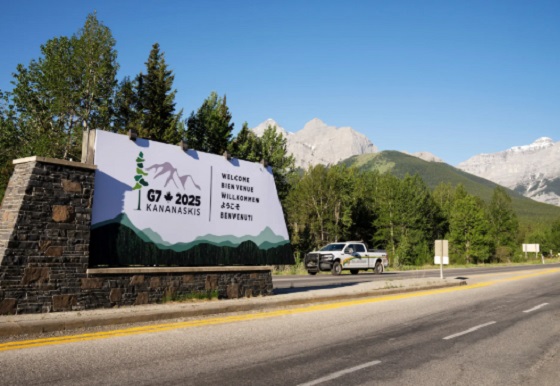

Energy security, resilience and affordability have long been protected by a continentally integrated energy sector.
The G7 summit in Kananaskis, Alberta, offers a key platform to reassert how North American energy cooperation has made the U.S. and Canada stronger, according to a joint statement from The Heritage Foundation, the foremost American conservative think tank, and MEI, a pan-Canadian research and educational policy organization.
“Energy cooperation between Canada, Mexico and the United States is vital for the Western World’s energy security,” says Diana Furchtgott-Roth, director of the Center for Energy, Climate and Environment and the Herbert and Joyce Morgan Fellow at the Heritage Foundation, and one of America’s most prominent energy experts. “Both President Trump and Prime Minister Carney share energy as a key priority for their respective administrations.
She added, “The G7 should embrace energy abundance by cooperating and committing to a rapid expansion of energy infrastructure. Members should commit to streamlined permitting, including a one-stop shop permitting and environmental review process, to unleash the capital investment necessary to make energy abundance a reality.”
North America’s energy industry is continentally integrated, benefitting from a blend of U.S. light crude oil and Mexican and Canadian heavy crude oil that keeps the continent’s refineries running smoothly.
Each day, Canada exports 2.8 million barrels of oil to the United States.
These get refined into gasoline, diesel and other higher value-added products that furnish the U.S. market with reliable and affordable energy, as well as exported to other countries, including some 780,000 barrels per day of finished products that get exported to Canada and 1.08 million barrels per day to Mexico.
A similar situation occurs with natural gas, where Canada ships 8.7 billion cubic feet of natural gas per day to the United States through a continental network of pipelines.
This gets consumed by U.S. households, as well as transformed into liquefied natural gas products, of which the United States exports 11.5 billion cubic feet per day, mostly from ports in Louisiana, Texas and Maryland.
“The abundance and complementarity of Canada and the United States’ energy resources have made both nations more prosperous and more secure in their supply,” says Daniel Dufort, president and CEO of the MEI. “Both countries stand to reduce dependence on Chinese and Russian energy by expanding their pipeline networks – the United States to the East and Canada to the West – to supply their European and Asian allies in an increasingly turbulent world.”
Under this scenario, Europe would buy more high-value light oil from the U.S., whose domestic needs would be back-stopped by lower-priced heavy oil imports from Canada, whereas Asia would consume more LNG from Canada, diminishing China and Russia’s economic and strategic leverage over it.
* * *
The MEI is an independent public policy think tank with offices in Montreal, Ottawa, and Calgary. Through its publications, media appearances, and advisory services to policymakers, the MEI stimulates public policy debate and reforms based on sound economics and entrepreneurship.
As the nation’s largest, most broadly supported conservative research and educational institution, The Heritage Foundation has been leading the American conservative movement since our founding in 1973. The Heritage Foundation reaches more than 10 million members, advocates, and concerned Americans every day with information on critical issues facing America.
Business
Beef is becoming a luxury item in Canada

This article supplied by Troy Media.
 By Sylvain Charlebois
By Sylvain Charlebois
Canadian beef prices have surged due to a shrinking cattle herd, high transportation costs, and potential market collusion
With summer weather settling in, Canadians are returning to a familiar ritual—ring up the barbecue. But as they approach the meat counter, many are faced with shockingly high prices. This year, the meat aisle has become a case study in supply-side economics and market dysfunction, leaving
consumers to wonder how this all came to be.
Since January, according to Statistics Canada, beef prices have surged dramatically. Striploin is up 34.2 per cent, top sirloin 33.7 per cent, and rib cuts nearly 12 per cent. Pork rib cuts and chicken breasts have each risen 5.9 per cent, while even meatless burger patties are 6.8 per cent more
expensive. Beef has led the way in these increases, and its dominance in the price hikes is striking. What’s particularly concerning is that it’s not just one cut of beef—virtually every option has seen a dramatic jump, putting pressure on Canadian consumers who were already grappling with rising food costs.
The cause behind these increases lies in Canada’s shrinking beef cow inventory, now at just 3.38 million head—the lowest since 1989. This represents a 1.2 per cent drop from last year, but it signals much more than a cyclical decline. Many cattle producers, facing an increasingly volatile market, are choosing to exit the industry while prices are favourable. Others are opting to reinvest in less risky sectors or even shift entirely to crop production, leaving the beef industry in a precarious state. In short, Canada’s beef industry is retreating, and with that retreat comes rising prices, fewer available cattle, and growing uncertainty.
South of the border, the U.S. is seeing a similar trend, but far less severe. According to the United States Department of Agriculture, the
American beef cow herd declined by just 0.5 per cent to 27.9 million head. This relatively modest drop, coupled with less disruption in their production practices, has resulted in more stable prices.
Over the past year, U.S. boneless sirloin steak rose 5.7 per cent, compared to a staggering 22 per cent in Canada. Ground beef saw a 10.8 per cent increase in the U.S., but 23 per cent in Canada. The price difference between the two countries is stark, and Canadians are feeling the inflationary pressure much more acutely.
There are several factors contributing to the price hikes: Canada’s vast geography, high transportation costs, a limited number of federally licensed beef processors, carbon pricing, and higher labour costs. Carbon pricing, in particular, has added a burden to sectors like beef production, where transportation costs are high. Regulations and logistical inefficiencies add to the costs, driving up prices for retailers and, ultimately, consumers.
This combination of factors is having a compounding effect on the price of beef, making it increasingly out of reach for many.
But there’s another possibility we can’t ignore: potential collusion within the industry. In Canada, a small number of large processors control much of the beef supply, which gives them significant influence over prices. The U.S. government has taken strong action against price-fixing among major meat packers like JBS, Tyson Foods, Cargill, and National Beef, leading to multimillion-dollar settlements. In Canada, however, the Competition Bureau has remained largely silent on similar concerns, allowing the possibility of price-fixing to persist unchecked. Perhaps it’s time for Canada to follow the U.S. lead and ensure the beef industry is held accountable for its actions.
The consequences of these rising costs are already evident. According to IBISWorld, Canadian per capita beef consumption fell by 7.1 per cent in 2023 and is expected to drop another 2.1 per cent in 2024. This isn’t merely a shift in dietary preferences—this is a structural change in consumer behaviour. Beef is becoming increasingly viewed as a luxury item, with many budget-conscious households turning to ground beef as a more affordable option. For many Canadians, beef is no longer a staple food but rather an occasional indulgence, reserved for special occasions or holiday meals.
This shift is unfortunate. Beef remains one of the most natural, sustainable sources of protein available to Canadians. Ranchers and processors have made significant strides in improving environmental stewardship, animal welfare, and food safety, often without recognition. Beef is not only nutritionally dense but also supports rural economies and provides a level of traceability few other protein sources can offer.
For many Canadian families, a summer steak on the grill is becoming more of a splurge than a staple. While Canadians will continue to enjoy beef, the frequency and volume of consumption will likely diminish.
Barbecue season hasn’t disappeared, but for many, it’s starting to look a little different: more sausages, more chicken, and fewer striploins. A shame, really, for a product that offers so much more than just taste.
Dr. Sylvain Charlebois is a Canadian professor and researcher in food distribution and policy. He is senior director of the Agri-Food Analytics Lab at Dalhousie University and co-host of The Food Professor Podcast. He is frequently cited in the media for his insights on food prices, agricultural trends, and the global food supply chain.
Troy Media empowers Canadian community news outlets by providing independent, insightful analysis and commentary. Our mission is to support local media in helping Canadians stay informed and engaged by delivering reliable content that strengthens community connections and deepens understanding across the country.
-

 Automotive1 day ago
Automotive1 day agoElectric vehicle sales are falling hard in BC, and it is time to recognize reality.
-

 Alberta5 hours ago
Alberta5 hours agoAlberta Independence Seekers Take First Step: Citizen Initiative Application Approved, Notice of Initiative Petition Issued
-
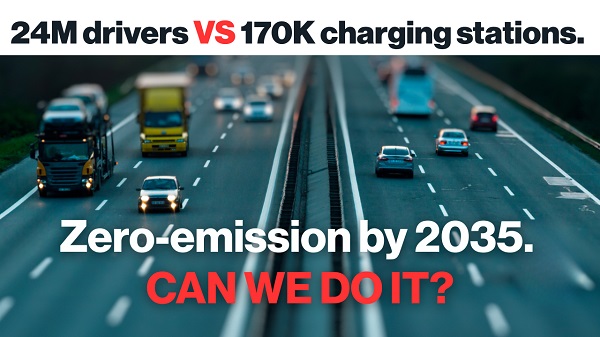
 Automotive1 day ago
Automotive1 day agoPower Struggle: Electric vehicles and reality
-
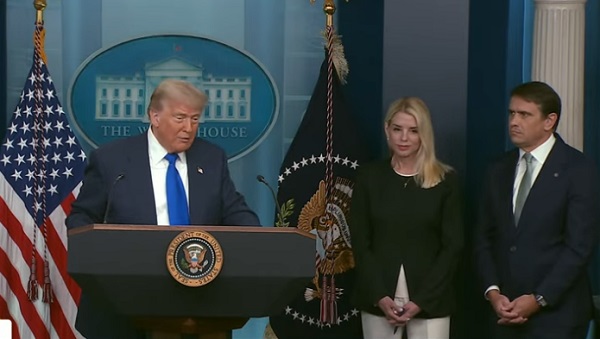
 Business1 day ago
Business1 day agoTrump on Canada tariff deadline: ‘We can do whatever we want’
-

 Business7 hours ago
Business7 hours agoCanada Caves: Carney ditches digital services tax after criticism from Trump
-

 Brownstone Institute2 days ago
Brownstone Institute2 days agoFDA Exposed: Hundreds of Drugs Approved without Proof They Work
-

 Crime7 hours ago
Crime7 hours agoSuspected ambush leaves two firefighters dead in Idaho
-
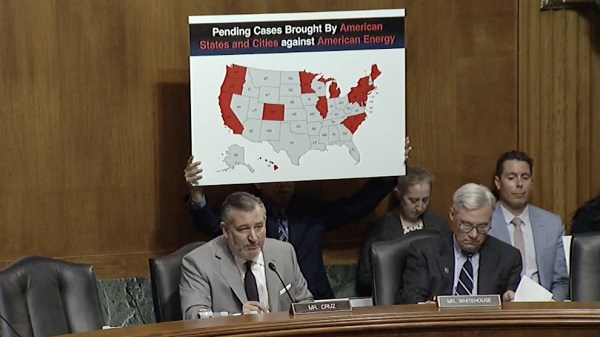
 Energy1 day ago
Energy1 day agoChina undermining American energy independence, report says
